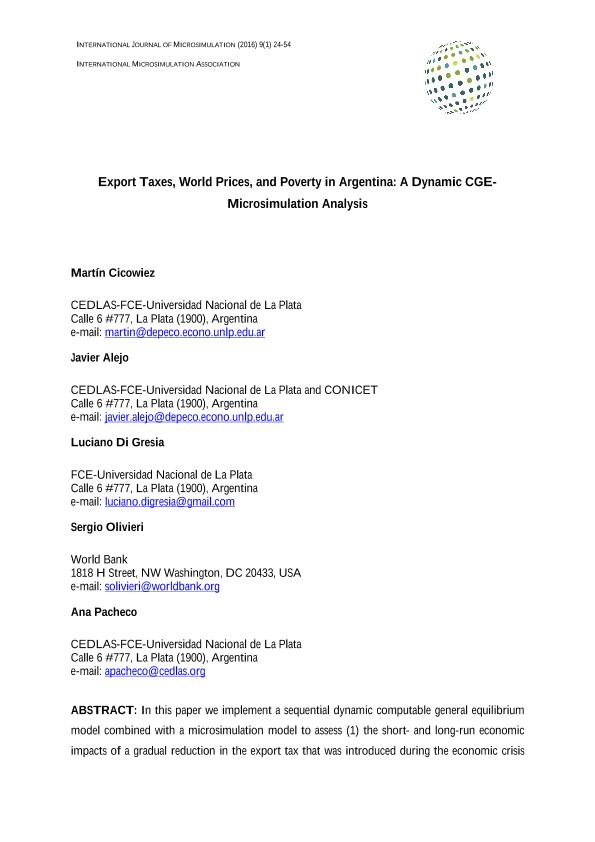Artículo
Export Taxes, World Prices, and Poverty in Argentina: A Dynamic CGE-Microsimulation Analysis
Fecha de publicación:
07/2016
Editorial:
International Microsimulation Association
Revista:
International Journal of Microsimulation
ISSN:
1747-5864
Idioma:
Inglés
Tipo de recurso:
Artículo publicado
Clasificación temática:
Resumen
In this paper we implement a sequential dynamic computable general equilibrium model combined with a microsimulation model to assess (1) the short- and long-run economic impacts of a gradual reduction in the export tax that was introduced during the economic crisis that hit Argentina at the end of 2001, and (2) the impact of a decrease in the world prices of food products, one of the country’s main export products. Our results show that the elimination of the export tax would have different long run effects depending on the fiscal instrument that is used by the government to compensate for the loss in tax revenue. On the one hand, when the government budget is balanced by decreased savings, the average annual growth rate for 2008-2015 is lower than in the baseline scenario. On the other hand, when the government budget is balanced by an increased direct tax rate, there is a long-run positive effect on growth. In all cases, the employment level is lower and the price of food items is higher. Therefore, the poverty headcount ratio increases. As expected, a reduction in the world price of food items (i.e., a worsening in Argentina’s terms of trade) would impact negatively on the country’s GDP growth rate and poverty, particularly in the rural areas.
Archivos asociados
Licencia
Identificadores
Colecciones
Articulos(CCT - LA PLATA)
Articulos de CTRO.CIENTIFICO TECNOL.CONICET - LA PLATA
Articulos de CTRO.CIENTIFICO TECNOL.CONICET - LA PLATA
Citación
Cicowiez, Martin; Alejo, Osvaldo Javier; Di Gresia, Luciano; Olivieri, Sergio; Pachecho, Ana; Export Taxes, World Prices, and Poverty in Argentina: A Dynamic CGE-Microsimulation Analysis; International Microsimulation Association; International Journal of Microsimulation; 9; 1; 7-2016; 24-54
Compartir




